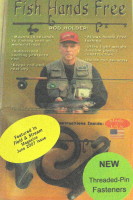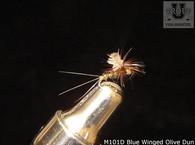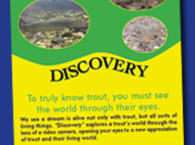
This class will discuss the necessary items to take on your trout fishing expedition as well as some simply nice items to take along.. Included will be what to wear, and what gear to take as well as some items that might be easily forgotten. Upon completion, the student should be able to plan a fishing trip and be confident that he will be well prepared.
What to Take – This depends somewhat on your destination. For fishing bodies of water with close proximity to the car and/or civilization, you can have more flexibility. For example, you can take a cooler full of cold drinks, Filtration Bottle, lunch, and snacks, or you can simply stop at a restaurant or convenience store for your food and beverage needs. You can take several types of fishing tackle, lures, all available at Orvis.
For fishing in the backcountry (this is our preferred method), you will need to carry everything you will need for the day with you. The best tool for this is generally a fishing vest which has one or more large, zippered pockets in the back to store a sandwich, bottles of water, toilet paper and soap, and small rain coat or poncho. A variety of these vests can be found at Orvis. The vest that we prefer and use is the Fly Fishing Vest and Tool Cadday that is found in the Trout University Store. This unique design created by a Montana professional engineer is specifically suited for fly fishing.
You may also need a trail map or GPS unit. Whether you are near the car or in the backcountry, you will need your license, extra fishing line/leaders, flies, lures, or bait, fingernail clippers for cutting the line, and needle nose pliers for getting hooks out. You may also want a landing net (if you are catching large trout), camera, or polarized glasses for cutting down on the glare reflected from the water.
Anything that shouldn’t get wet (including food, toilet paper, map, electronics – including your car’s remote entry, and wallet) should be in sealed or zippered sandwich bags or waterproof cases. What to wear – For fishing in streams with rocky bottoms, you will want a pair of felt-soled boots. These are much better at gripping the wet, slippery rocks in a trout stream than anything else. However, they don’t help much at all on leaf-covered stream banks. For fishing in warm weather in small streams, you may simply wear felt-soled boots with shorts (preferably with buttoned/zippered pockets) and a T-shirt (preferably a drab or camouflage color).
For fishing in large streams or cold weather, you will want to wear waders. We recommend getting waders without integrated boots, and buying the boots separately. Neoprene waders offer durability (for abrasion on rocks, downed trees, and underbrush) and superior insulation (for spending large amounts of time in the water or cold weather), at the expense of comfort. (It feels like you’re walking with bungee cords wrapped around your feet.) However, for better comfort, consider a lighter weight wader. We feel so strongly about the importance of waders, that we will refer you to an article in "Midcurrent" that has been reprinted with permission from American Angler. This article was well researched and written by Zach Matthews whose web site is itinerantangler. You will note, that the recommendation is that "you get what you pay for". In other words, get the most expensive waders that you can afford!
Additionally, for fishing in cold weather, dress in layers. Be sure the outer layer is a color that blends in with the surrounding scenery. Consider carrying a handwarming product with you, as gloves can be cumbersome while fishing. When fishing in the back country, consider taking a small backpack to carry your boots and waders, until you get to the stream. Then, switch the boots and waders out for your hiking shoes. You can either wear the backpack, or leave it somewhere you won’t forget it, and pick it up later. Be sure to take a spare set of clothes and leave them in the car, in case you fall in the water while fishing. It’s much better than driving home cold and wet.
The following list may be used as an inventory for items which I believe are essential for fly fishing:
fly box and nail clippers
vest
forceps or needle nose pliers for extracting flies
net
hook sharpener
pinch on floats for strike indicators and twist lead
polarized sun glasses
waders with felt soles or boots with felt
hat, optional
insect repellent
Evaluate your equipment arsnel and shop at TroutU store for any updates that you feel necessary.
Read these instructional DVD's to further your fly fishing knowledge.
Getting Started Fly Fishing Basics Contains basic information to help you select optimal equipment.
Top 85 Tips on Fly Fishing for Trout Contains valuable information to help you get started in catching more trout.
Trout and Their Habitat Learn about the habits and the locations of the various trout species.
Take a fiels trip to either of these family oriented state parks explore and refine your needs.





